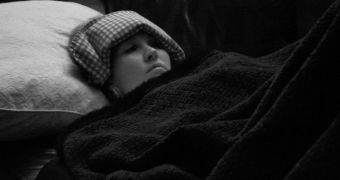A team of American experts is currently testing the capabilities of a new device it developed that allows for the treatment of migraines on the go. The instrument is a hand-held apparatus that releases short magnetic pulses from time to time, which are apparently very good at taking over debilitating headaches, the team says. The assessment study was conducted by experts at the Albert Einstein College of Medicine, in New York, the BBC News reports.
This approach to mitigating the symptoms of migraines was created to provide people with an alternative to existing therapies, which all revolve around using strong medication. In their experiments, the group members learned that the magnetic device was effective in completely annihilating migraines in about 40 percent of test patients. The new instrument took about two hours to trigger its maximum effects. There were no considerable side-effects detected in the trial group, and all the participants reported that the device was very safe to use even in the comfort of their own homes.
But the study revealed that the team needed to put a little more work into the timing of the doses. This will most likely be a trial-and-error process, as there is no way of knowing how each patient will respond to the therapy. But the advantage that this new apparatus brings is the fact that it can be used at home, rather than in the organized settings of hospitals. All other studies conducted on similar devices were performed on bulky machines, which were by no means portable. This hand-held piece of equipment works by releasing single-pulse transcranial magnetic stimulation (sTMS).
Researchers say that these pulses disrupt the flow of electrical signals in the brain that has been regularly associated with the onset of symptoms of migraines with aura. “The use of sTMS could be a major step forward in the treatment of migraine with aura, particularly in patients in whom presently available drug treatment is ineffective,” University Hospital Essen in Germany expert Hans-Christoph Diener says. “We look forward to hearing the results of further sTMS trials in the future. Migraine and headache are the least publicly funded of all neurological conditions in the UK, particularly relative to their economic impact,” the Migraine Trust Chief Executive, Wendy Thomas, adds.

 14 DAY TRIAL //
14 DAY TRIAL //